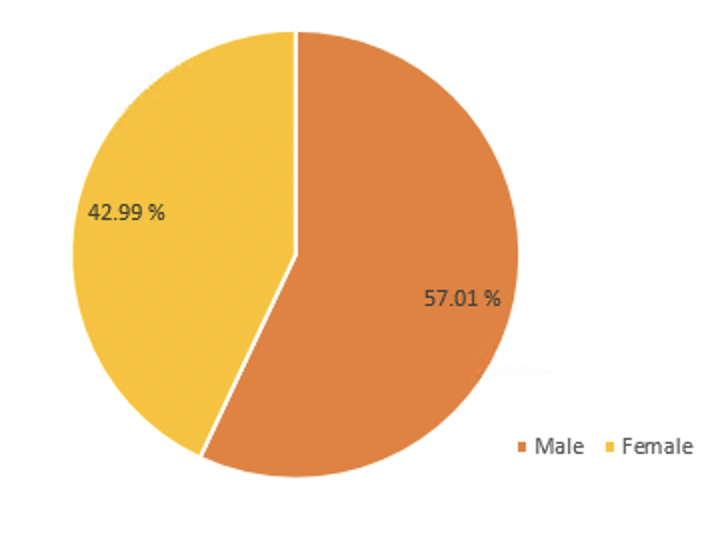Being exposed to high temperatures and excessive UV rays can have negative short term and long term health effects. Young children, those with medical conditions and the elderly are particularly vulnerable to high temperatures. It is important to take extra care during the summer months to protect against dehydration, heat stroke and sun burn. Excessive exposure to the sun’s ultraviolet rays can have negative health consequences including increased risk of skin cancer.
Melanoma – Skin cancer
There are two main types of skin cancer: non-melanoma skin cancer (which includes basal cell skin cancer, squamous cell skin cancer and other rare types) and melanoma skin cancer. Non-melanoma skin cancer is more common and less serious than melanoma.
Recent statistics have revealed a higher prevalence of skin cancer among people in Gibraltar compared to those in neighbouring countries. In 2022, 132 cases of skin cancer were detected by the Dermatology Department, Gibraltar Health Authority, with 14 of those cases identified as melanoma. As of November 2023, 21 cases of melanoma have been detected this year.
It is important to note that this data only includes the number of cases of melanoma detected by the Dermatology Department at St.Bernard’s Hospital. Other departments (e.g. neurology, opthalmology) may also detect cases of melanoma, however this data is not captured by the JSNA at this time. Additionally, the JSNA does not currently include private sector cancer data.
Figure 1: Number of malignant melanoma skin cancer detected by Dermatology Department, 2007-2023.

Of all individuals diagnosed with melanoma skin cancer at the dermatology department between 2007 and 2022, 27% were in the 50-59 year age group (figure 2). The risk of melanoma increases as people age. In the UK in 2016-2018, on average each year more than a quarter of new cases (29%) were in people aged 75 and over (Cancer Research UK, 2023).
Figure 2: Of all individuals diagnosed with melanoma skin cancer between 2007-2022 the following graph shows the percentage of these individuals by age group.

Figure 3: Melanoma Skin Cancer diagnosed at Dermatology Department between 2007 and 2022, by sex.

Of all individuals diagnosed with melanoma between 2007 and 2022 at the Dermatology Department, 57.01% were male and 42.99% were female. In the United Kingdom, 50% of melanoma cases are observed in females and 50% are observed in males (Cancer Research UK, 2023). However, worldwide the total incidence of cutaneous melanoma is higher in men than women (Bellenghi et al., 2020).
Signs and symptoms of melanoma
Asymmetry – Most melanomas are likely to be uneven or irregular in shape (asymmetrical). Ordinary moles are usually more even and both halves look mostly the same (symmetrical).
Borders – The edges around a melanoma (border) are more likely to be uneven, irregular or jagged. Ordinary moles usually have a clear, smooth-edged border.
Colour – Melanomas are usually more than one colour. They may have different shades, such as brown mixed with a black, red, pink, white or blue tint. Normal moles usually only have shades of brown.
If you have red or fair hair and pale skin, the melanoma may only be red or pink with no brown. This is called amelanotic melanoma. It is much less common.
Diameter – Melanomas are usually more than 6mm wide. Normal moles are usually about the size of the blunt end of a pencil, or smaller.
Evolving – Look for changes in the size, shape or colour of a mole. The change in shape can include the area becoming raised or dome-shaped. Or, if the mole is flat, it may stay that way but become wider.
If you have black or brown skin, it can be harder to see the signs of melanoma. Black and Asian people have a lower risk of melanoma. But this does not mean you have no risk. It is still important to be aware of skin changes that may be linked to a skin cancer.
Acral lentiginous melanoma is an uncommon type of melanoma. But it is more common in Black and Asian people. It usually develops in areas of skin that get little sun exposure, such as:
- the palms of the hands
- soles of the feet
- nail areas, for example under the fingernails or toenails.
Look for anything new, changing or unusual on both sun-exposed and sun-protected areas of the body. (Macmillan UK, 2023).
Figure 4: Skin chart symptom checker for melanoma skin cancer. Image source: Macmillan Cancer Support.


